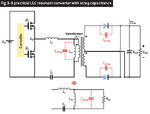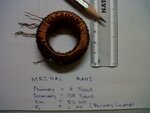micktosin
Junior Member level 2

Please how can I measure a leakage reactance of a llc half bridge transformer using resonance? Assuming the magnetizing inductance is 100uH, leakage= 20uH and capacitor = 1.4uF, turns ratio 9:3
Last edited:





